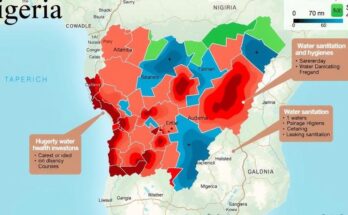Climate change is becoming more severe, weakening the cooling impact of La Niña. India is predicted to experience above-normal temperatures and intense heatwaves, reflecting a new normal driven by human-induced climate change. Recent assessments show significant warming trends and increased heatwave occurrences, underscoring urgent challenges posed by the evolving climate.
Recent assessments by climate scientists indicate that climate change is intensifying, rendering the cooling effects of La Niña less effective in our warming climate. The India Meteorological Department (IMD) has forecasted an early summer with above-normal temperatures and extended heatwave periods.
Data reveals that February 2024 was the warmest recorded since 1901, coupled with one of the lowest rainfall levels since 2001. This shift represents a new normal characterized by warmer winters and shorter springs, attributed largely to anthropogenic climate change.
Arpita Mondal, an associate professor at the Centre for Climate Studies at IIT Bombay, noted the unusually dry winter this year, which she attributed to the lack of rainfall that typically helps cool temperatures. Additionally, Raghu Murtugudde, an earth system scientist at IIT Bombay, identified global temperature anomalies linked to wind patterns, particularly the behavior of jet streams.
Mondal emphasized that alterations in jet stream patterns, specifically a northward shift before the monsoon, are tied directly to the intensity and duration of heatwaves. Vimal Mishra, a chair professor at IIT Gandhinagar, explained the influence of El Niño and La Niña on temperature variability, highlighting a tendency for warmer conditions during El Niño phases.
The World Meteorological Organization (WMO) recently reported that the weak La Niña that formed in December 2024 is predicted to be short-lived. Further projections indicate average global temperatures during March 2024 to February 2025 will be significantly elevated above historical averages, coinciding with persistently high sea surface temperatures.
Murtugudde pointed out anomalies in Pacific ocean temperatures, highlighting that recent patterns defy expectations established during the cold phase. Research suggests that future El Niño events could become increasingly frequent and severe, with predictions of extreme conditions.
The 2023-24 El Niño has been noted as one of the strongest recorded, contributing to global temperature increases and extreme weather phenomena. In India, the summer of 2024 witnessed an alarming 536 heatwave days, marking the highest occurrence in over a decade.
According to Mishra, the profound impact of climate change must be acknowledged, especially during potential ENSO-neutral conditions. The WMO forecasts a 60 percent likelihood of such conditions from March to May 2025, yet it is expected that El Niño will exacerbate challenges while La Niña may not offer any relief.
In summary, climate change is becoming increasingly pronounced, affecting weather patterns globally. The predictions indicate a heightened intensity of heatwaves, with the effects of La Niña diminishing in significance. As we forecast future conditions, it is essential to recognize the profound influence of climate change on severe weather events, particularly under El Niño circumstances. Continued monitoring and action are vital to mitigate these changes and adapt to the new climatic realities.
Original Source: www.theweek.in




